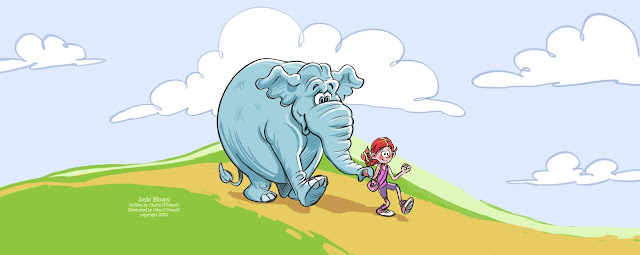John O'Connell's "How to Draw Cartoons" Lessons
The Creative Process_Drawing from memory.
From scribble to final print image. Notice the searching lines in the beginning. To some degree you are drawing from your memory's recall. I've noticed the more intensely you draw for long periods your recall
begins to sharpen, and the amount of time to capture or create something
from memory. Seeing something getting closer to how it really looks usually triggers your mind to remember more detail, so it's good to do several passes. There are different ways of doing this. Some people use a light table, others tracing paper. As I draw, I add or correct my first lines with darker lines, then I roll a kneaded eraser (the are like play dough) over my original,which lightens my original lines or almost erases them. Since I'm working digitally from there, I scan the layout, or what is even faster now, I take a picture with my phone and email it to myself, then open it in Photoshop to do my digital inking and coloring.
A Quick overview of the process from sketch to digital art:
Step One: Pick your subject. Do a personality profile in writing. Do a loose, expressive sketch. Focus on feeling and gesture. Avoid eveness and symmetry. Observe tilts in shoulders and hips. Research clothing styles for reference. Observe and learn wrinkle patterns in clothing, this will create a natural effect.
Step Two: Scan into Photoshop. Work in layers. One for outline, one for solid colors. Use the multiply setting of the next layer to add "global shadows", instead of picking lights and darks color by color. Use a top layer in the normal layer setting add highlights. From reference material observe the natural qualities of light, and how it affects the color pureness, and values. Add reflective light to the opposite side as the main light source. This creates roundedness and dimension. Add layers as needed to add texture, which will add polish to the final presentation.
Hopefully with hard work, your Gramma will put it on her fridge.



Comments